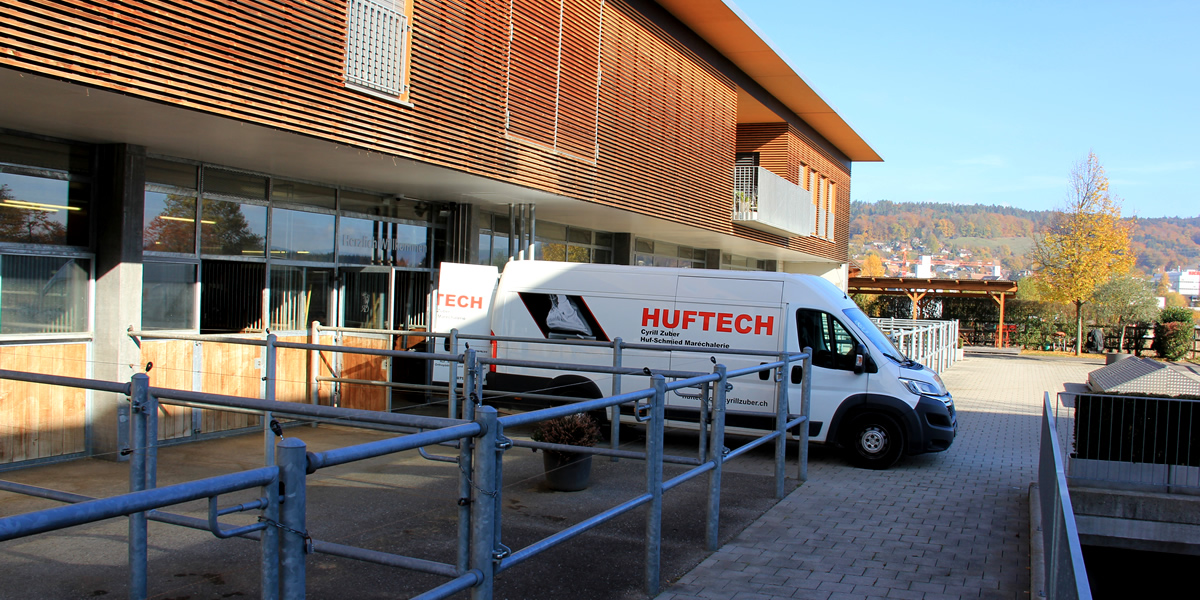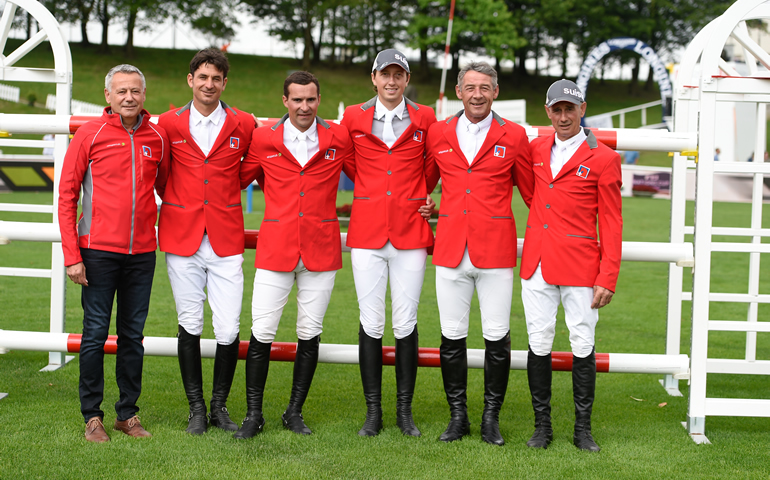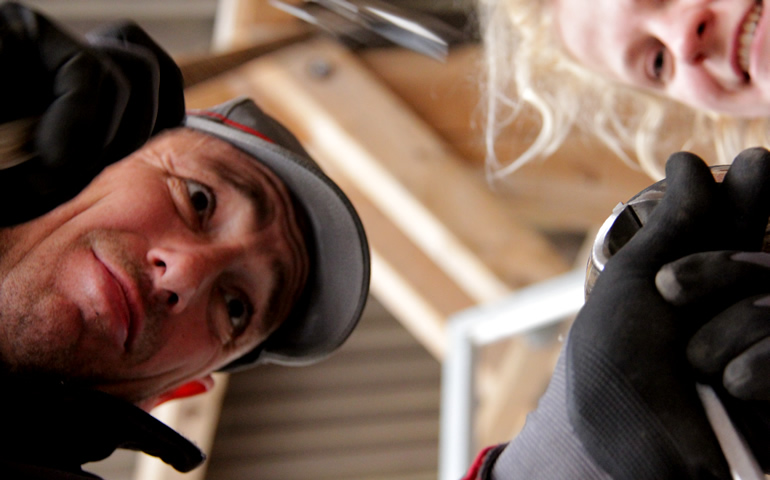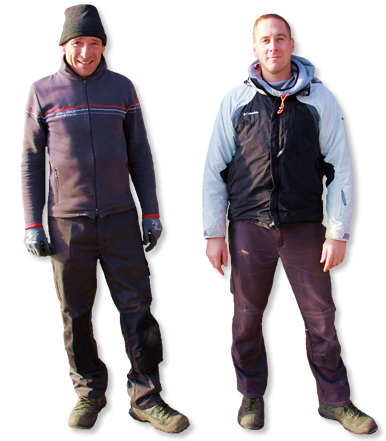Farrier
The farrier comes...
The farrier comes every six to eight weeks. He prepares the hooves of barefoot horses or shoes them. The farrier's work is good when the hooves have their natural size and shape at the end and when they are adapted to the intended use and the physical characteristics of the respective horse, with or without shoes.
Farriery
For new customers, a discussion is held before the shoeing begins in order to clarify various important points (age, type, build of the horse, limb position, wear of the horseshoes, use of the horse, gaits at a walk, trot and canter, etc.). The shoeing is then defined in consultation with the customer (rider / horse owner). As a rule, normal shoeing (with ideal position or only slight deviations) is appropriate for most horses.
My service
Farriery Cyrill Zuber thus offers you
- Various fitting options
- a prompt and reliable service
- a competent service on site
- a calm handling of their horse
How can you please me and make my work easier? Quite simply, namely by having your horse turn up for shoeing with clean, dry, ungreased hooves and the horse does not have to be lured out of the pasture first, we don't always have enough carrots with us...

Hoof care
We find the highest degree of naturalness in the barefoot horse. In the original way of life of horses, abrasion and horn growth balance each other out, and the optimal hoof shape and position maintains itself. The horse that lives in the care of man must be helped to keep its hooves healthy. One of the most important points in shoeing is to make sure that the course of movement is not restricted throughout the shoeing period, for example by hooves that are too flat, toes that are too long and the like. I recommend that horses be shod every 7 to 10 weeks, depending on their intended use. The hooves should be cleared daily without damaging the frog. Approximately twice a week the hooves should be washed clean and - while still wet - greased. The grease helps to keep the moisture in the hoof. Dry hooves should not be greased, as the grease would seal the hoof horn and thus prevent the absorption of moisture.
Good to know
The horse should stand clean and dry, otherwise the hooves will soften. Soft hooves, however, make solid shoeing impossible. I also recommend clearing the hooves before each grazing session. Otherwise manure residues are pressed deep into the frog furrows and can cause frog rot. Of course, the hooves should also be cleared after grazing. Shoeing as such is actually a necessary evil. It would be nice if wear and growth of the hoof were in balance. Unfortunately, this is not the case! The hoof therefore needs protection. With conventional shoeing, a good solution could be found. An extremely important point when shoeing is that we do not artificially lengthen the hoof, as otherwise the rolling of the front hooves can no longer be optimally guaranteed.
References

Engaged as farrier of the Swiss Show Jumping Team at the following World Equestrian Games, Olympics and European Championships:
- 2018 World Championship Tryon
- 2016 Rio Olympics
- 2015 EC Aachen
- 2014 World Cup Normandy
Why choose us?

There are many reasons to choose us, here is a small selection:
- good education and training
- great know-how
- international experience
- serious advice
- optimal realisation
- highest quality
Why choose us?
Infrastructure












